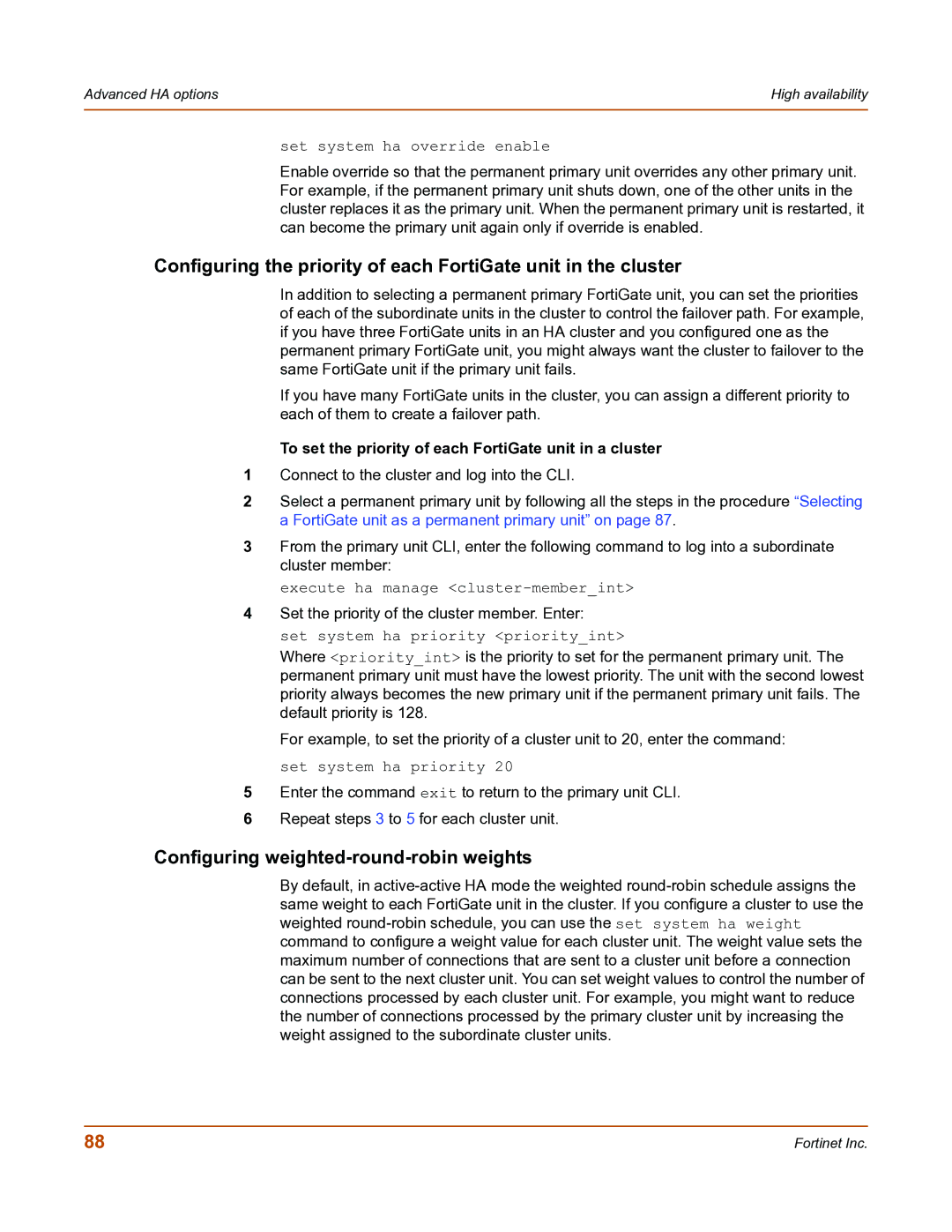Advanced HA options | High availability |
|
|
set system ha override enable
Enable override so that the permanent primary unit overrides any other primary unit. For example, if the permanent primary unit shuts down, one of the other units in the cluster replaces it as the primary unit. When the permanent primary unit is restarted, it can become the primary unit again only if override is enabled.
Configuring the priority of each FortiGate unit in the cluster
In addition to selecting a permanent primary FortiGate unit, you can set the priorities of each of the subordinate units in the cluster to control the failover path. For example, if you have three FortiGate units in an HA cluster and you configured one as the permanent primary FortiGate unit, you might always want the cluster to failover to the same FortiGate unit if the primary unit fails.
If you have many FortiGate units in the cluster, you can assign a different priority to each of them to create a failover path.
To set the priority of each FortiGate unit in a cluster
1Connect to the cluster and log into the CLI.
2Select a permanent primary unit by following all the steps in the procedure “Selecting a FortiGate unit as a permanent primary unit” on page 87.
3From the primary unit CLI, enter the following command to log into a subordinate cluster member:
execute ha manage
4Set the priority of the cluster member. Enter:
set system ha priority <priority_int>
Where <priority_int> is the priority to set for the permanent primary unit. The permanent primary unit must have the lowest priority. The unit with the second lowest priority always becomes the new primary unit if the permanent primary unit fails. The default priority is 128.
For example, to set the priority of a cluster unit to 20, enter the command: set system ha priority 20
5Enter the command exit to return to the primary unit CLI.
6Repeat steps 3 to 5 for each cluster unit.
Configuring weighted-round-robin weights
By default, in
88 | Fortinet Inc. |
